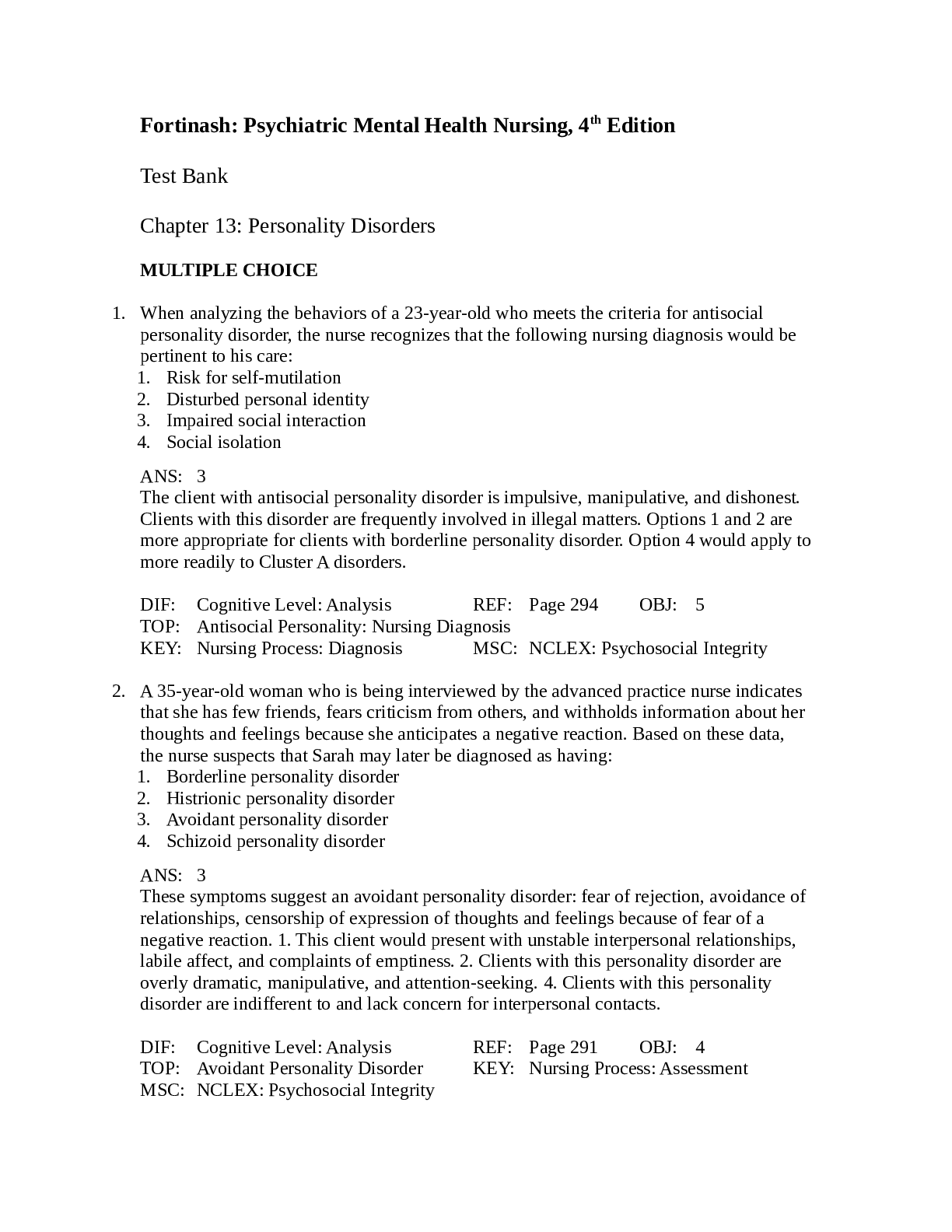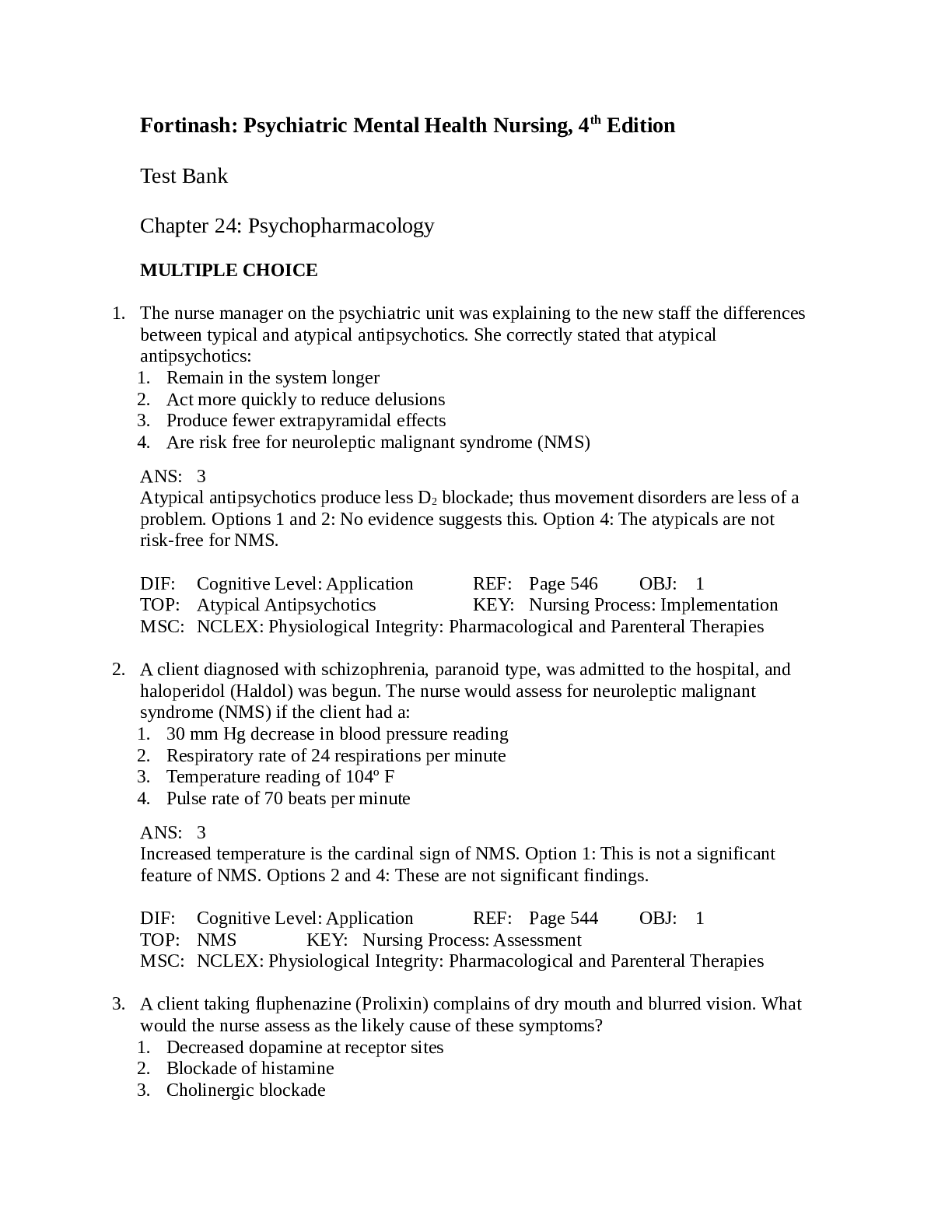*NURSING > QUESTIONS & ANSWERS > Understanding Pathophysiology 7 th Edition Test Bank Chapter 1. Cellular Biology (All)
Understanding Pathophysiology 7 th Edition Test Bank Chapter 1. Cellular Biology
Document Content and Description Below
Understanding Pathophysiology 7 th Edition Test Bank Chapter 1. Cellular Biology MULTIPLE CHOICE 1. A student is observing a cell under the microscope. It is observed to have supercoiled DNAwith ... histones. Which of the following would also be observed by the student? a. A single circular chromosome b. A nucleus c. Free-floating nuclear material d. No organelles ANS: B The cell described is a eukaryotic cell, so it has histones and a supercoiled DNA within its nucleus; thus, the nucleus should be observed. A single circular chromosome is characteristic of prokaryotic cells, which do not have histones. Free-floating nuclear material describes a prokaryotic cell, which would not have a distinctnucleus. Eukaryotic cells have membrane bounded cellular components called organelles. No organellesdescribes a prokaryotic cell. 2. A nurse is instructing the staff about cellular functions. Which cellular function is the nursedescribing when an isolated cell absorbs oxygen and uses it to transform nutrients to energy? a. Metabolic absorption b. Communication c. Secretion d. Respiration ANS: D The ability of the cell to absorb oxygen refers to the cells function of respiration. The ability of the cell to function within a society of cells refers to its function ofcommunication. The ability of the cell to take in nutrients refers to the cells function of metabolic absorption. The ability of the cell to synthesize new substances and secrete these elsewhere refers to the cellsfunction of secretion. 3. A eukaryotic cell is undergoing DNA replication. In which region of the cell would most ofthe genetic information be contained? a. Mitochondria b. Ribosome c. Nucleolus d. Nucleus ANS: C The region of the cell that contains genetic material, including a large amount of ribonucleic acid, most of the DNA, and DNA-binding proteins, is the nucleolus. The mitochondria is the site of cellular respiration. The ribosomes are involved in manufacturing of proteins within the cell. The nucleus contains the nucleolus, and it is the nucleolus that contains genetic material. 4. The fluid mosaic model for biologic membranes describes membrane behavior. According tothis model, which of the following float singly or as aggregates in the fluid lipid bilayer? a. Peripheral membrane proteins b. Integral membrane proteins c. Glycoproteins d. Cell adhesion molecules ANS: B Integral membrane proteins float freely in the fluid lipid bilayer. Peripheral membrane proteins are not embedded in the layer, but reside at the surface.Glycoproteins act as cell surface markers. Cell adhesion molecules are on the outside of the membrane and allow cells to hook together. 5. Which of the following can bind to plasma membrane receptors? a. Oxygen b. Ribosomes c. Amphipathic lipids d. Ligands ANS: D Ligands are specific molecules that can bind with receptors on the cell membrane.Oxygen moves by diffusion; it does not bind to receptors. Ribosomes make proteins and are not involved in binding.Amphipathic lipids are a portion of the cell membrane. 6. A nurse is reviewing a report from a patient with metastatic cancer. What finding would support the diagnosis of metastatic cancer? Alterations in extracellular matrix that include: a. Decreased fibronectin b. Increased collagen c. Decreased elastin d. Increased glycoproteins ANS: A Reduced amounts of fibronectin are found in some types of cancerous cells, allowing cancercells to travel, or metastasize. Collagen provides strength, and its breakdown is associated with osteoarthritis, not cancer. Elastin is found in the lungs and allows tissues to stretch; it is not associated with cancerouscells. Decreased, not increased, glycoproteins are associated with cancerous cells. 7. Which form of cell communication is used to relate to other cellsin direct physical contact? a. Cell junction b. Gap junction c. Desmosomes d. Tight junctions ANS: A Cell junctions hold cells together and permit molecules to pass from cell to cell. Gap junctions allow communication from the inside of one cell to the inside of another. Desmosomes are not involved in communication, but allow cells to hold together. Tight junctions are barriers that prevent movement of some substances and leakages of others. 8. Pancreatic beta cells secrete insulin, which inhibits secretion of glucagon from neighboringalpha cells. This action is an example of which of the following signaling types? a. Paracrine b. Autocrine c. Neurohormonal d. Hormonal ANS: A Paracrine signaling involves the release of local chemical mediators that are quickly taken up,destroyed, or immobilized, as in the case of insulin and the inhibition of the secretion of glucagon. When cells produce signals that they themselves respond to, autocrine signaling is used. Neurohormonal signaling involves secretion of hormones into the bloodstream by neurosecretoryhormones. Hormonal signaling involves specialized endocrine cells that secrete hormone chemicals released by one set of cells that travel through the tissue through the bloodstream to produce a response inother sets of cells. 9. In cellular metabolism, each enzyme has a high affinity for a: a. Solute b. Substrate c. Receptor d. Ribosome ANS: B Each enzyme has a high affinity for a substrate, a specific substance converted to a product of thereaction. Solutes are small particles that pass through the cell membrane. A receptor is a site on the cell wall that allows transport into the cell. Ribosomes are located inside the cell and are not related to the work of enzymes. [Show More]
Last updated: 1 year ago
Preview 1 out of pages

Reviews( 0 )
Document information
Connected school, study & course
About the document
Uploaded On
Aug 30, 2021
Number of pages
Written in
Additional information
This document has been written for:
Uploaded
Aug 30, 2021
Downloads
0
Views
2


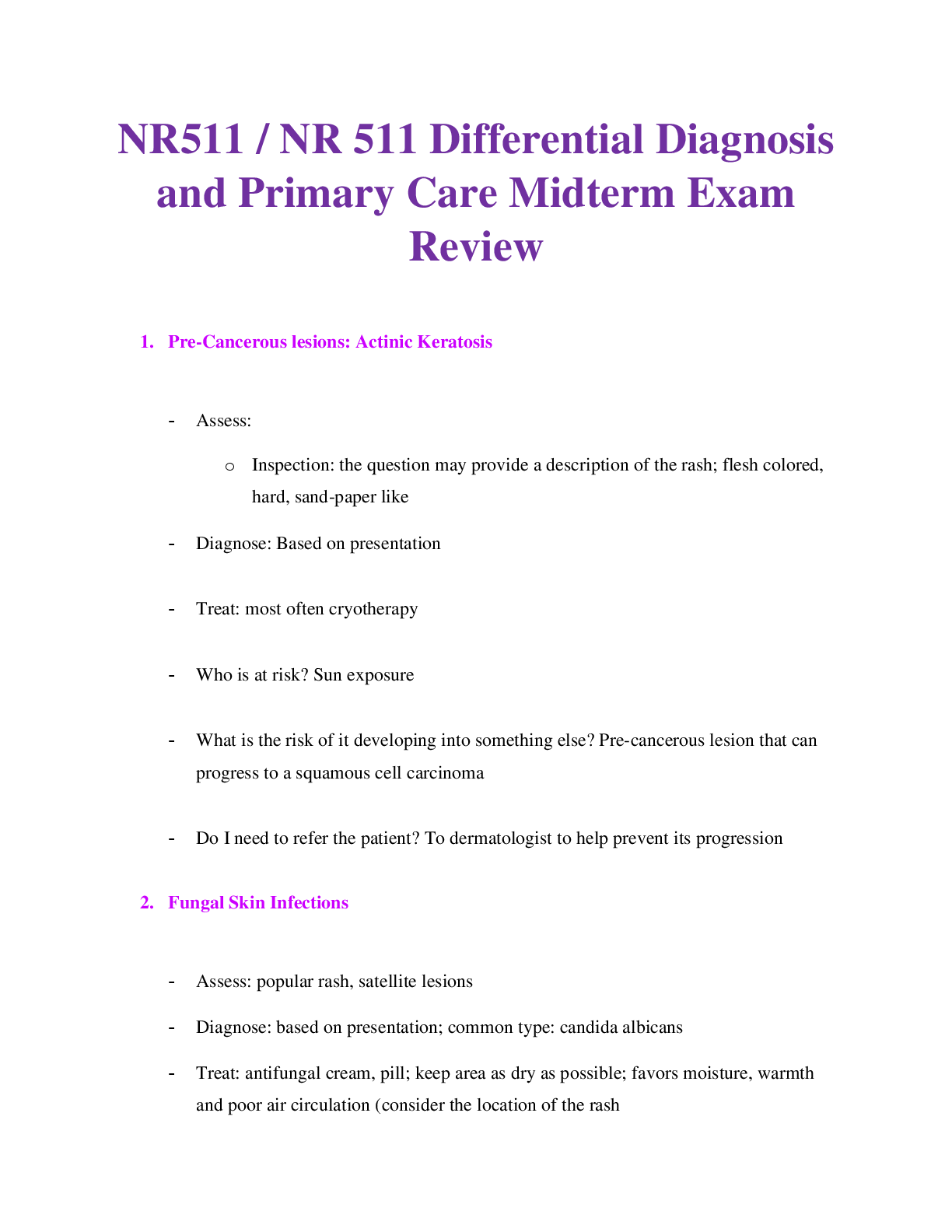
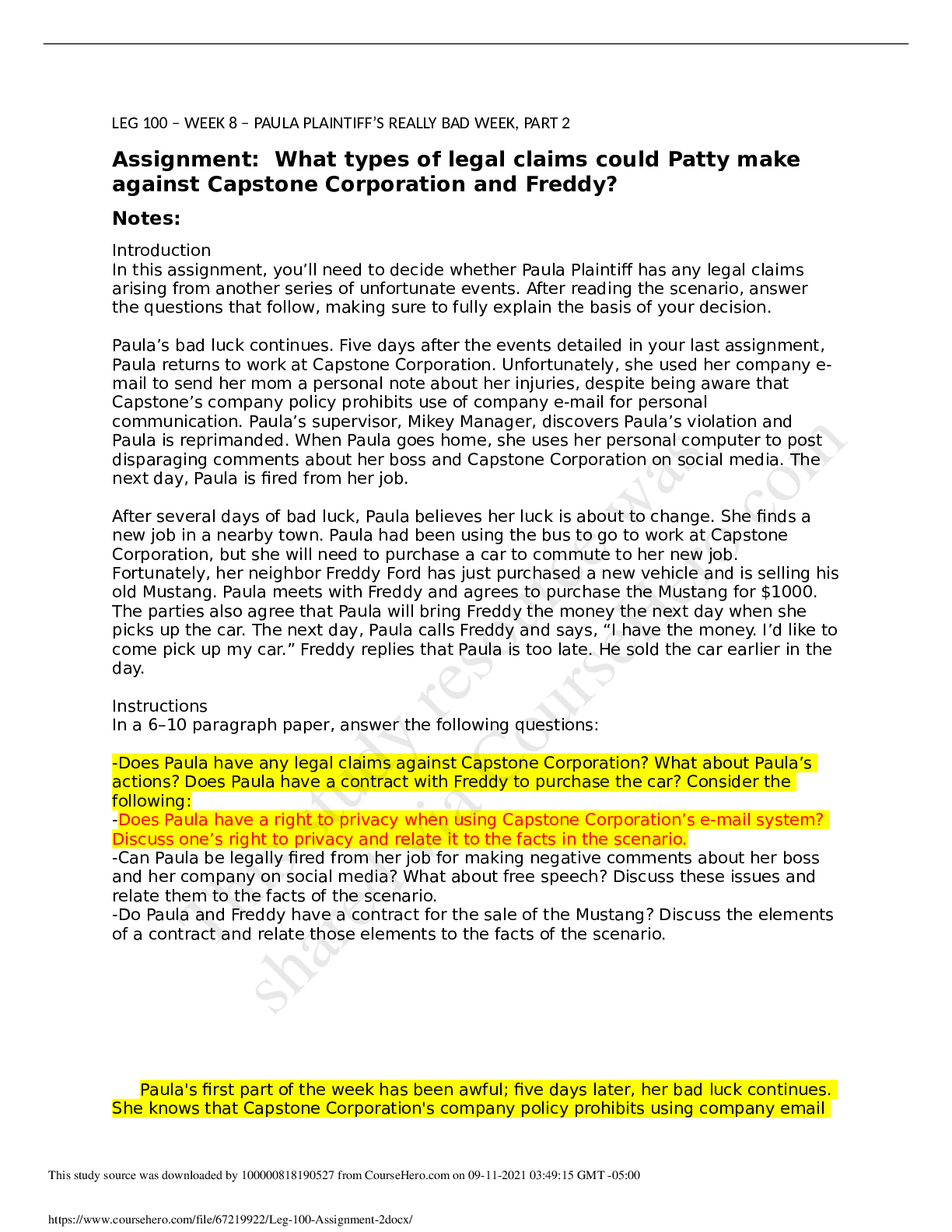
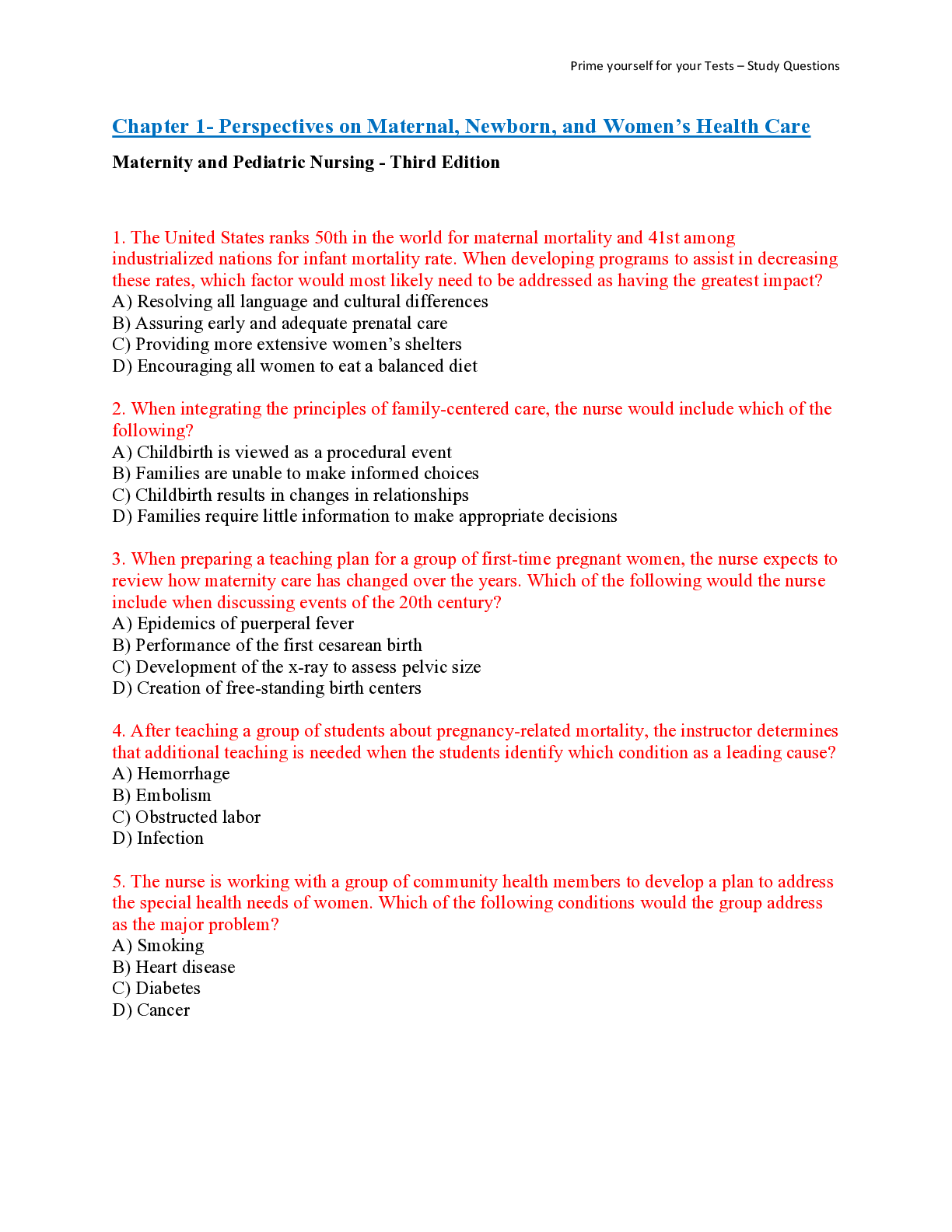
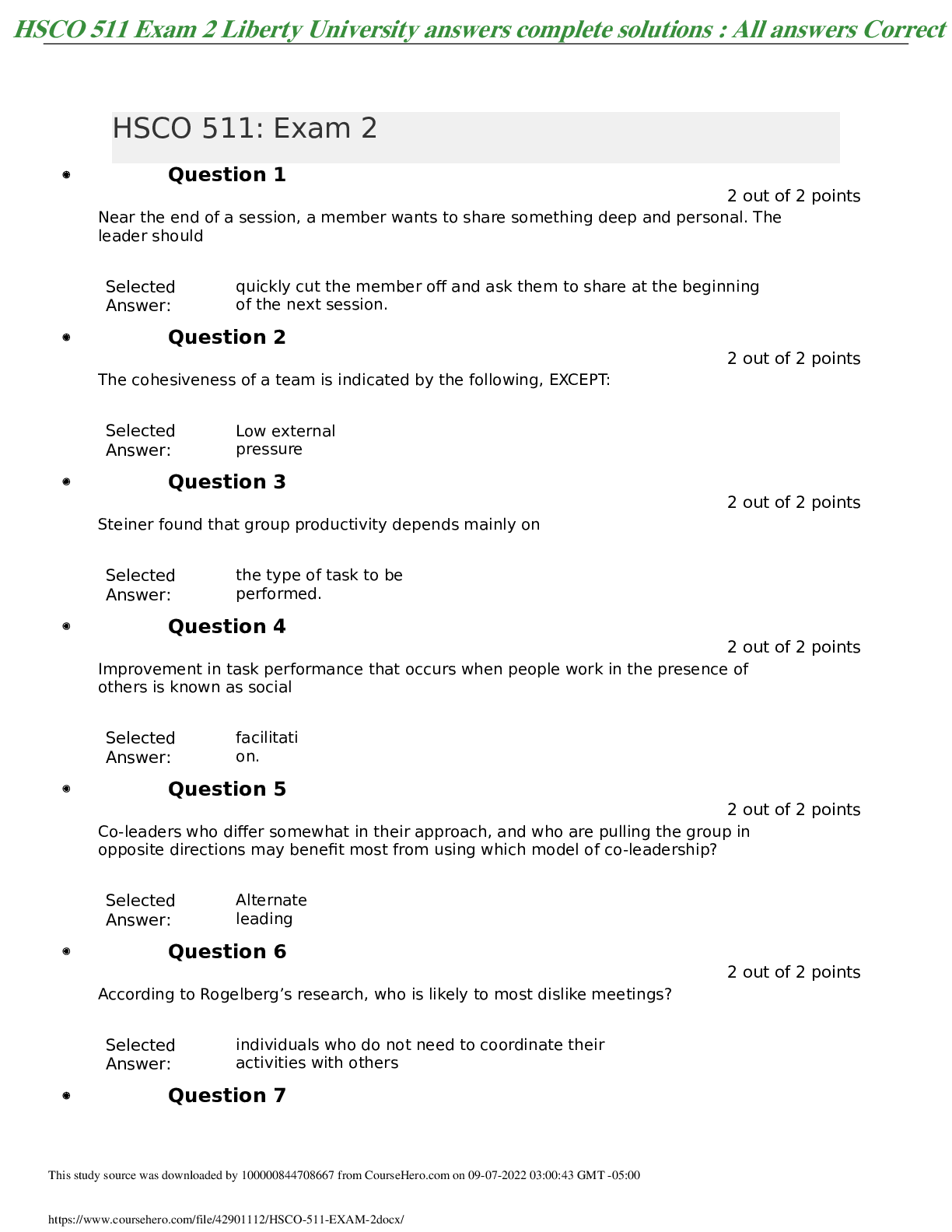
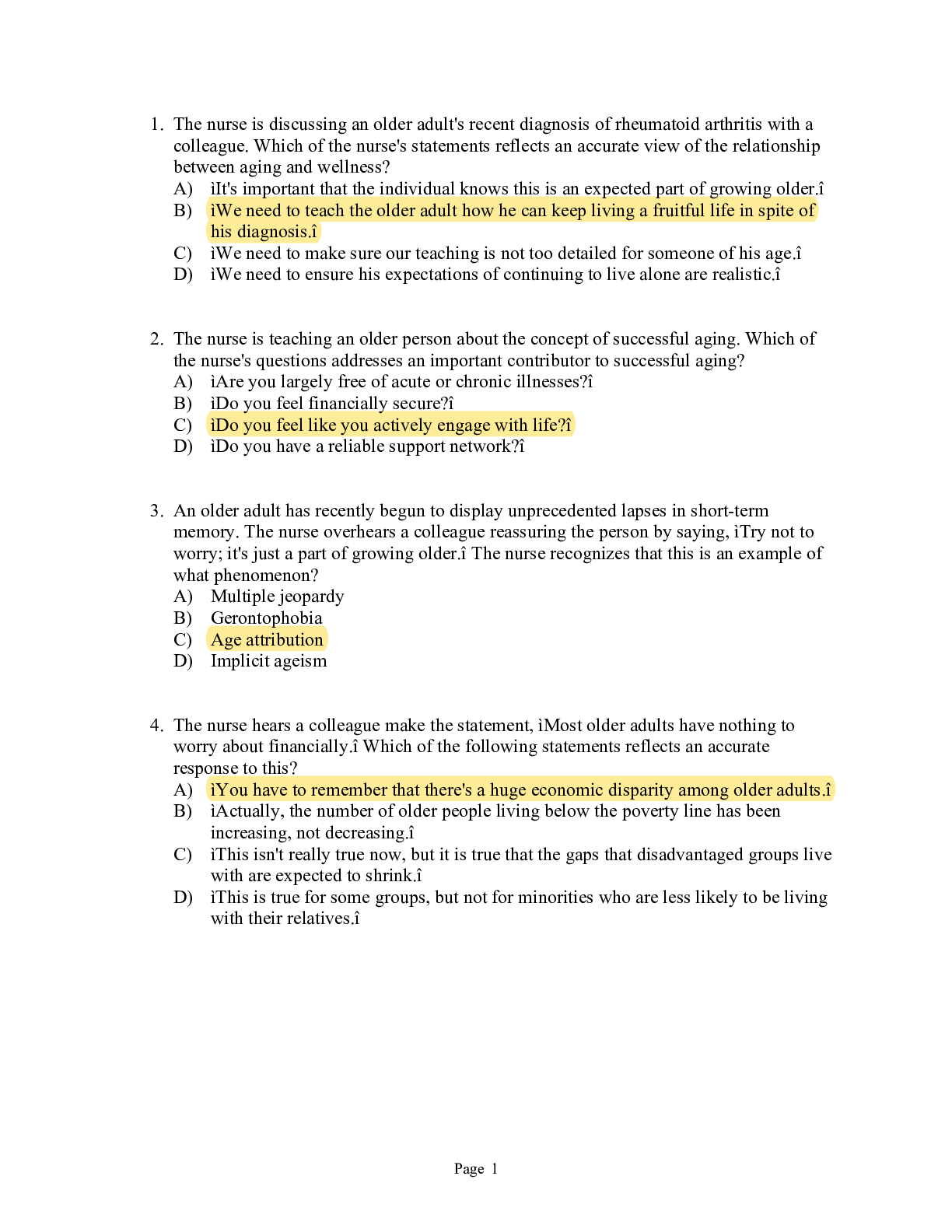

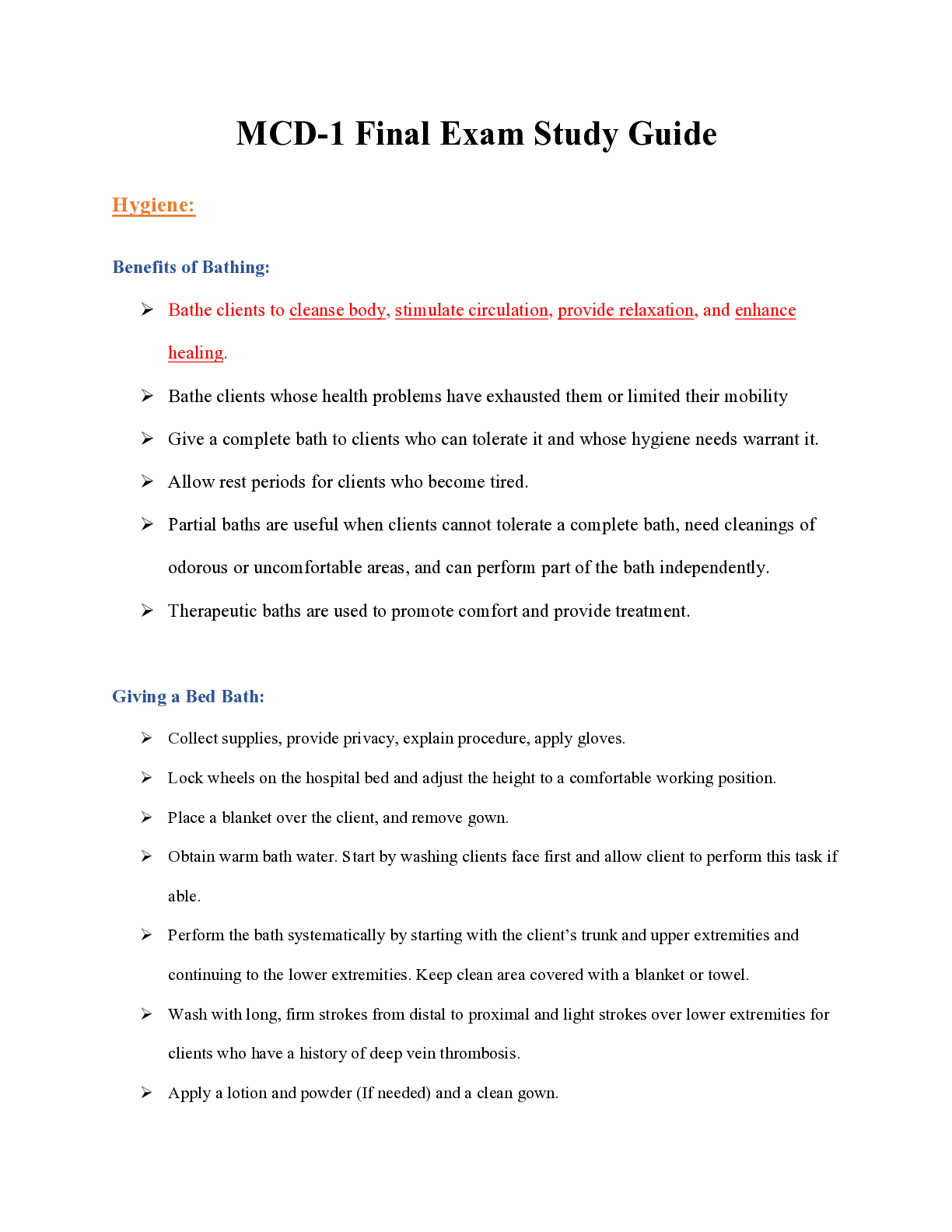

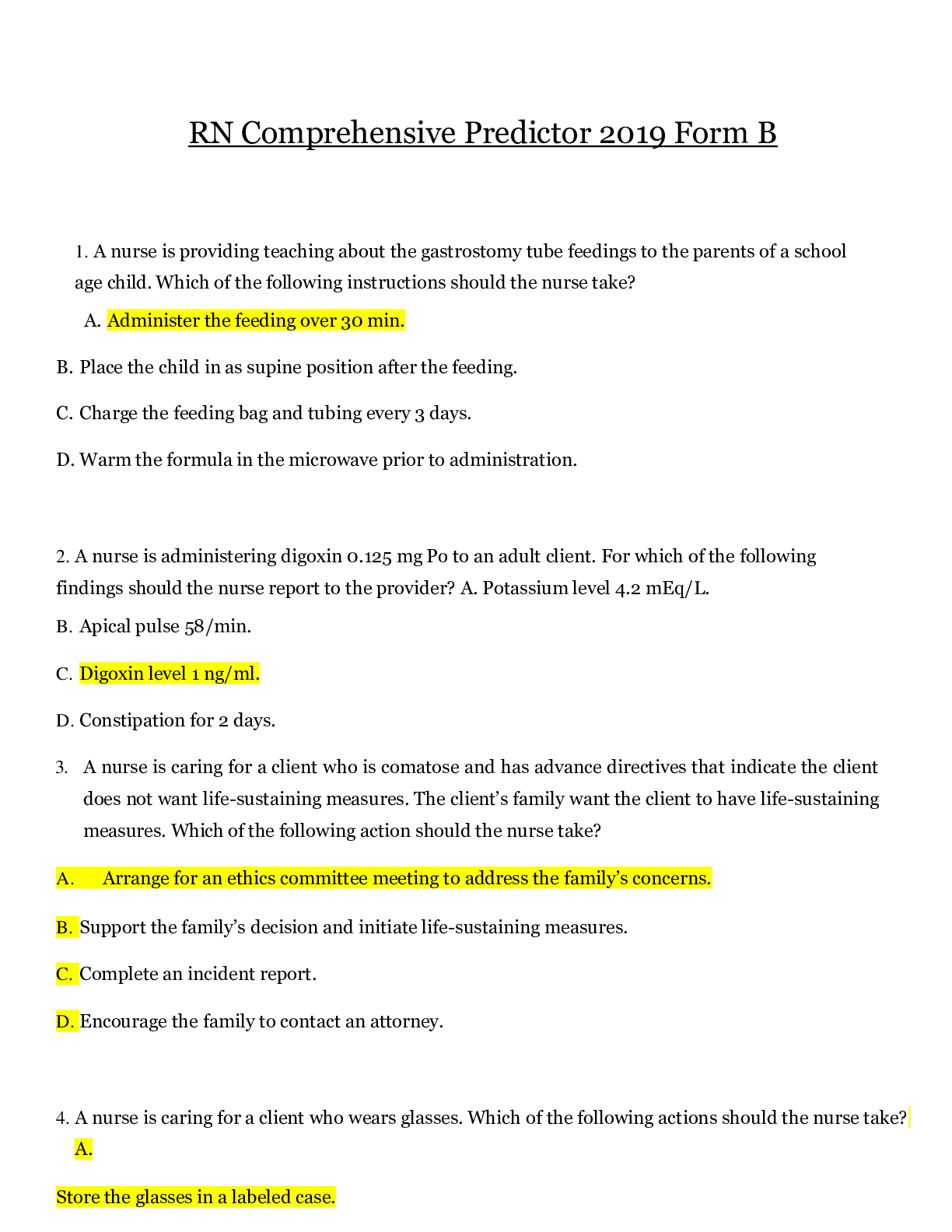
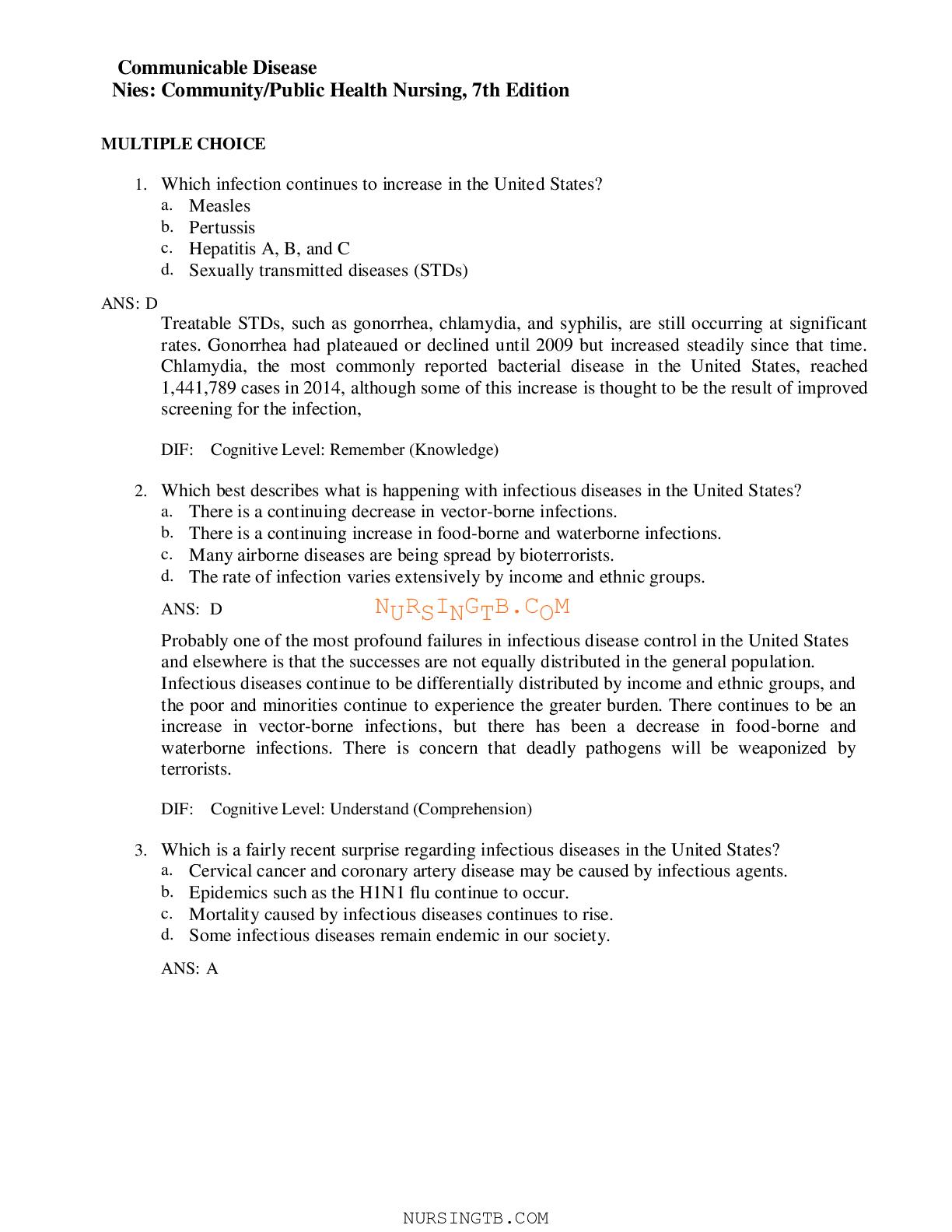
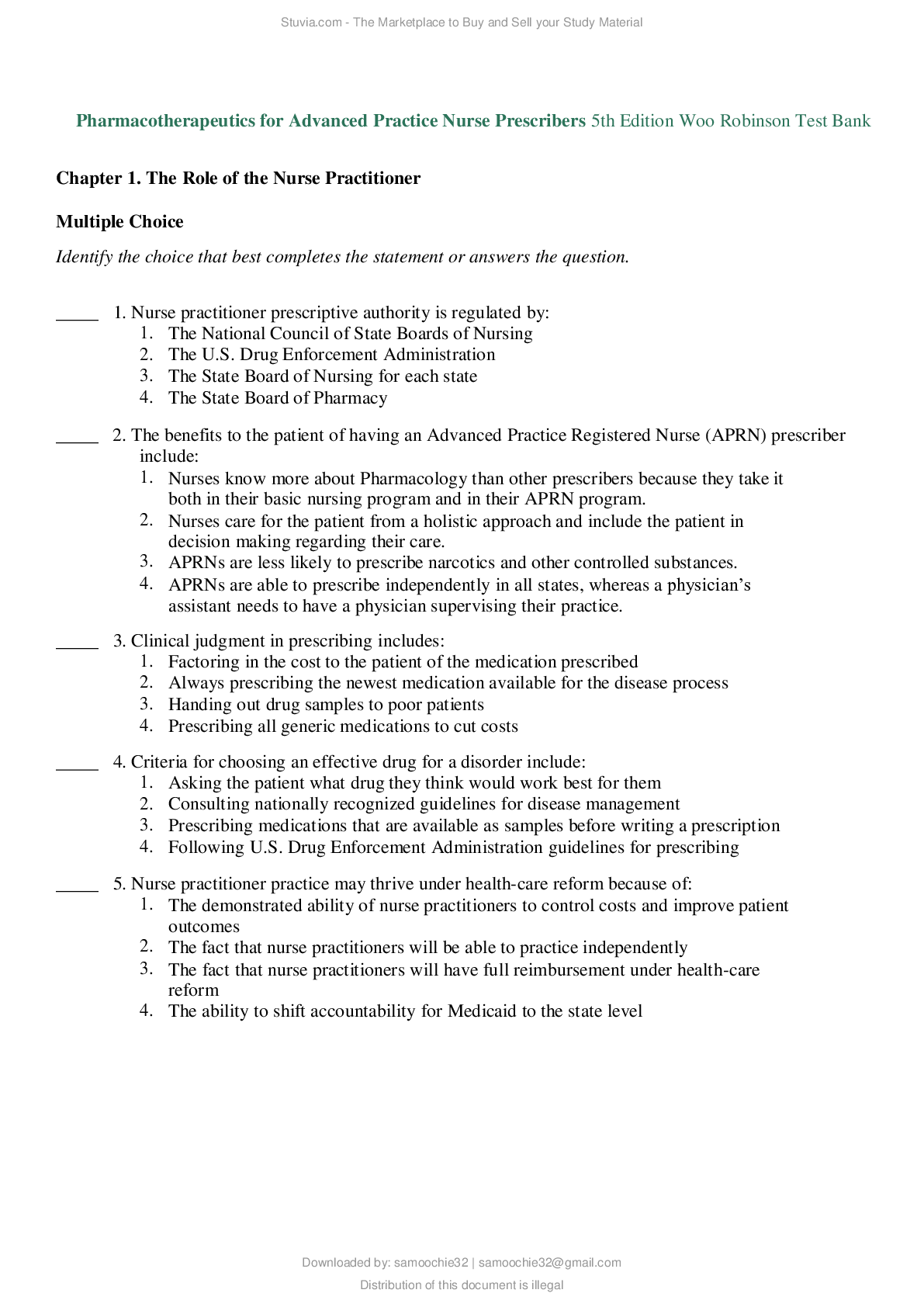
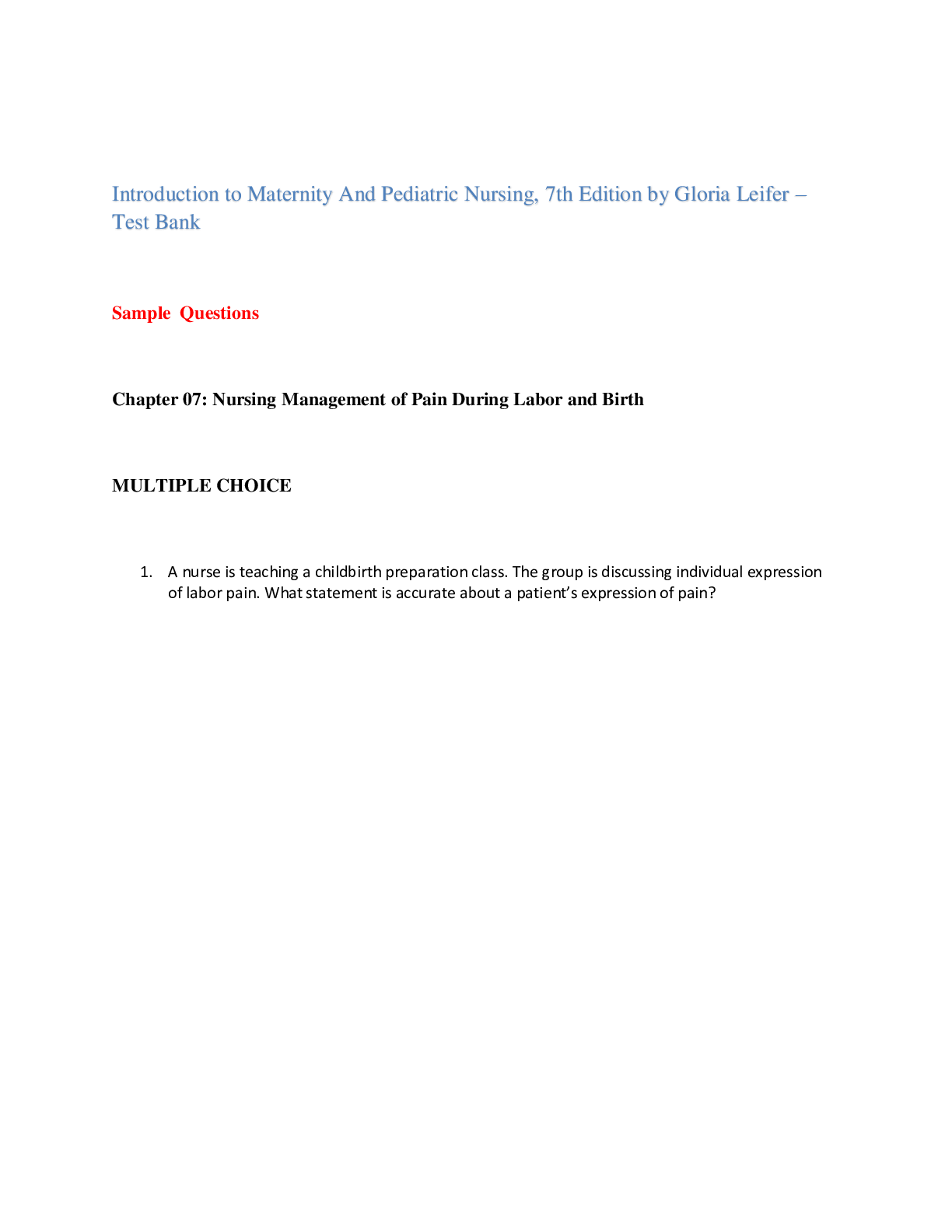
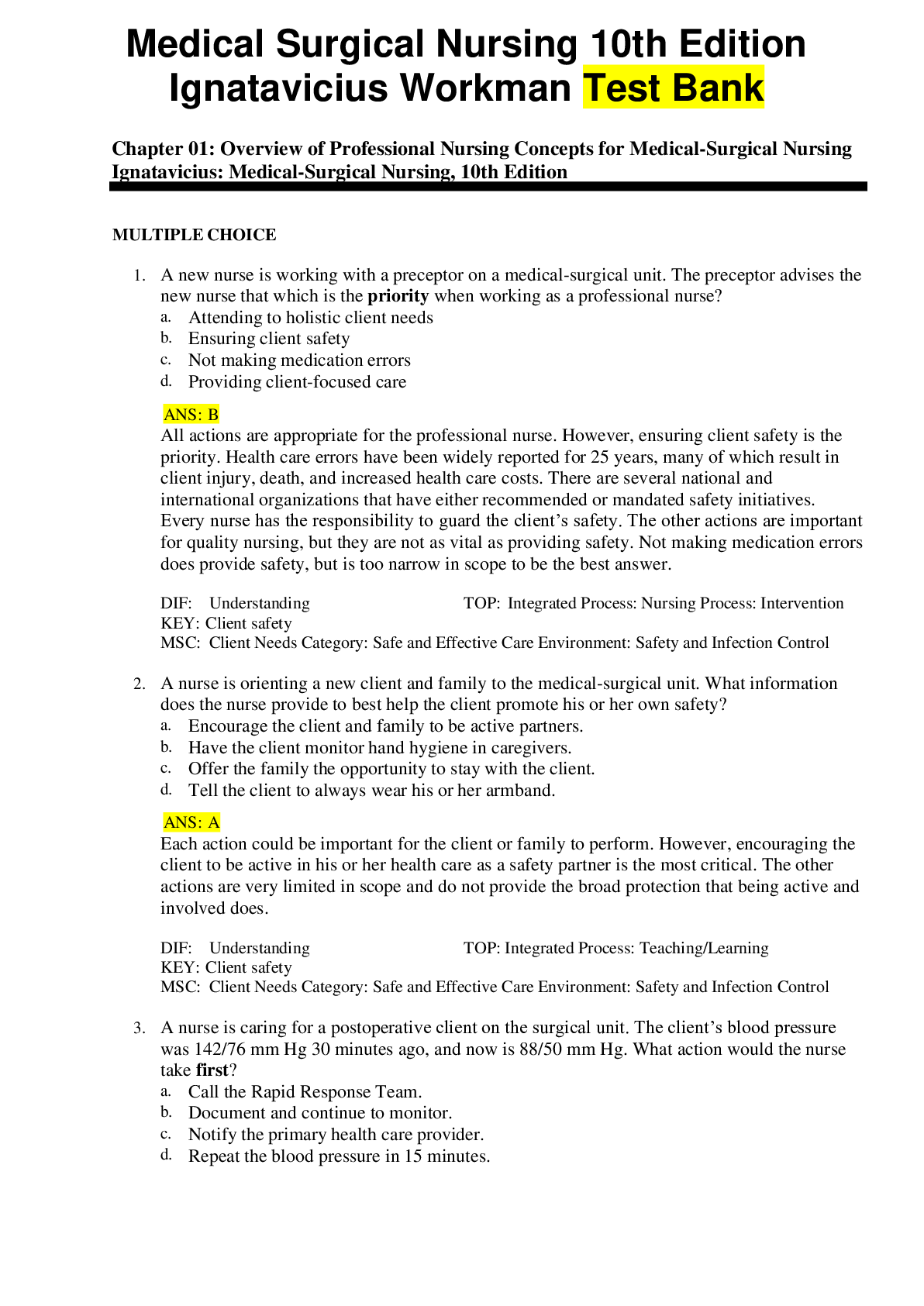


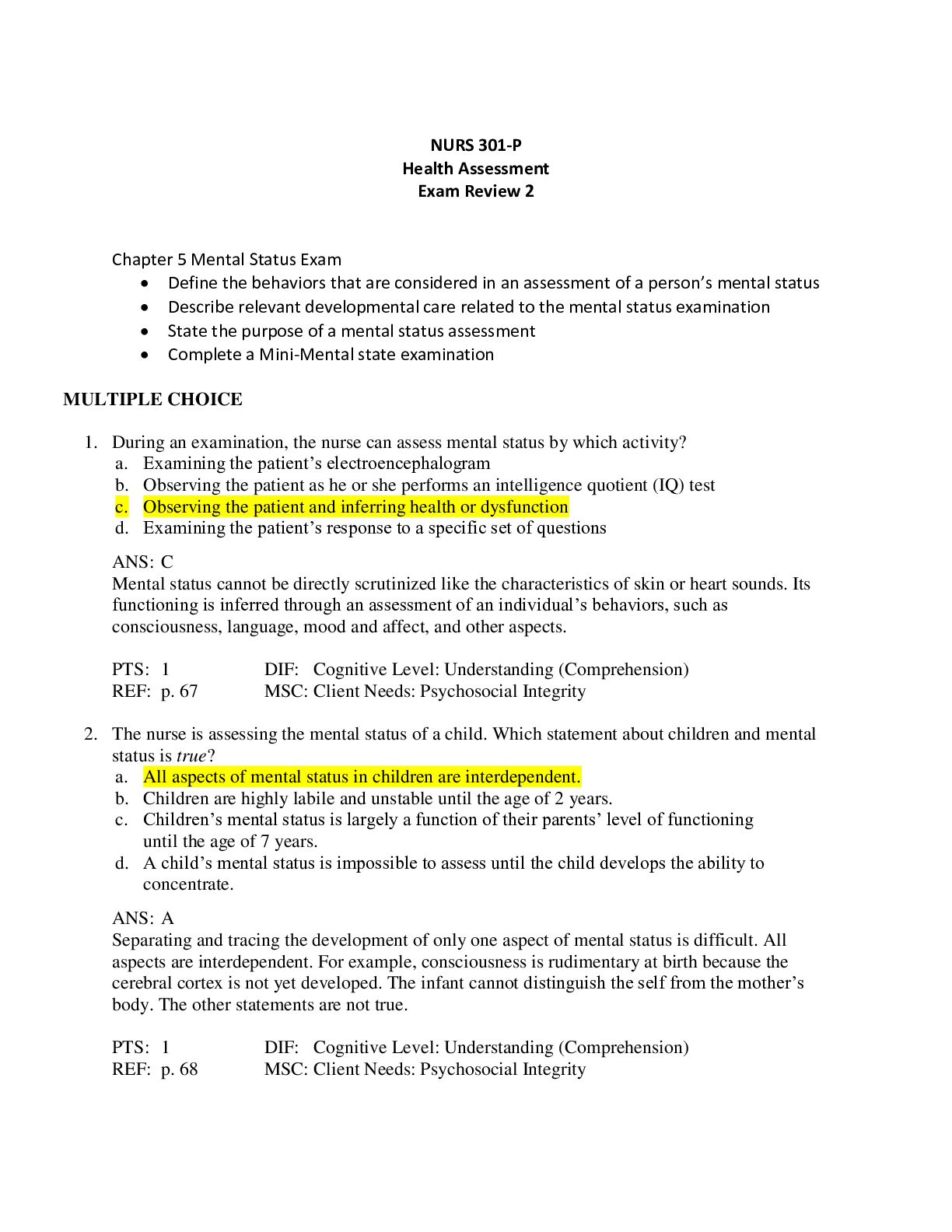
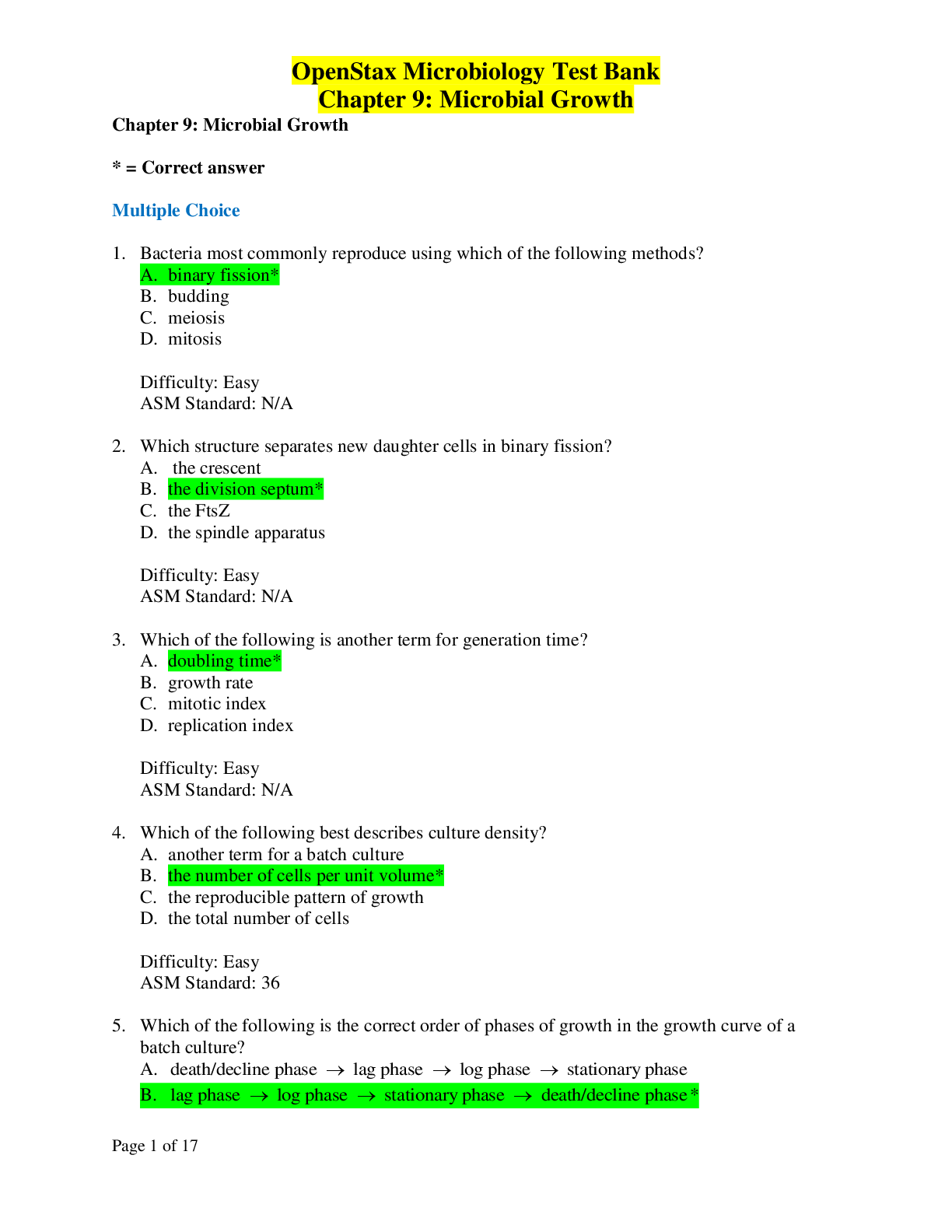





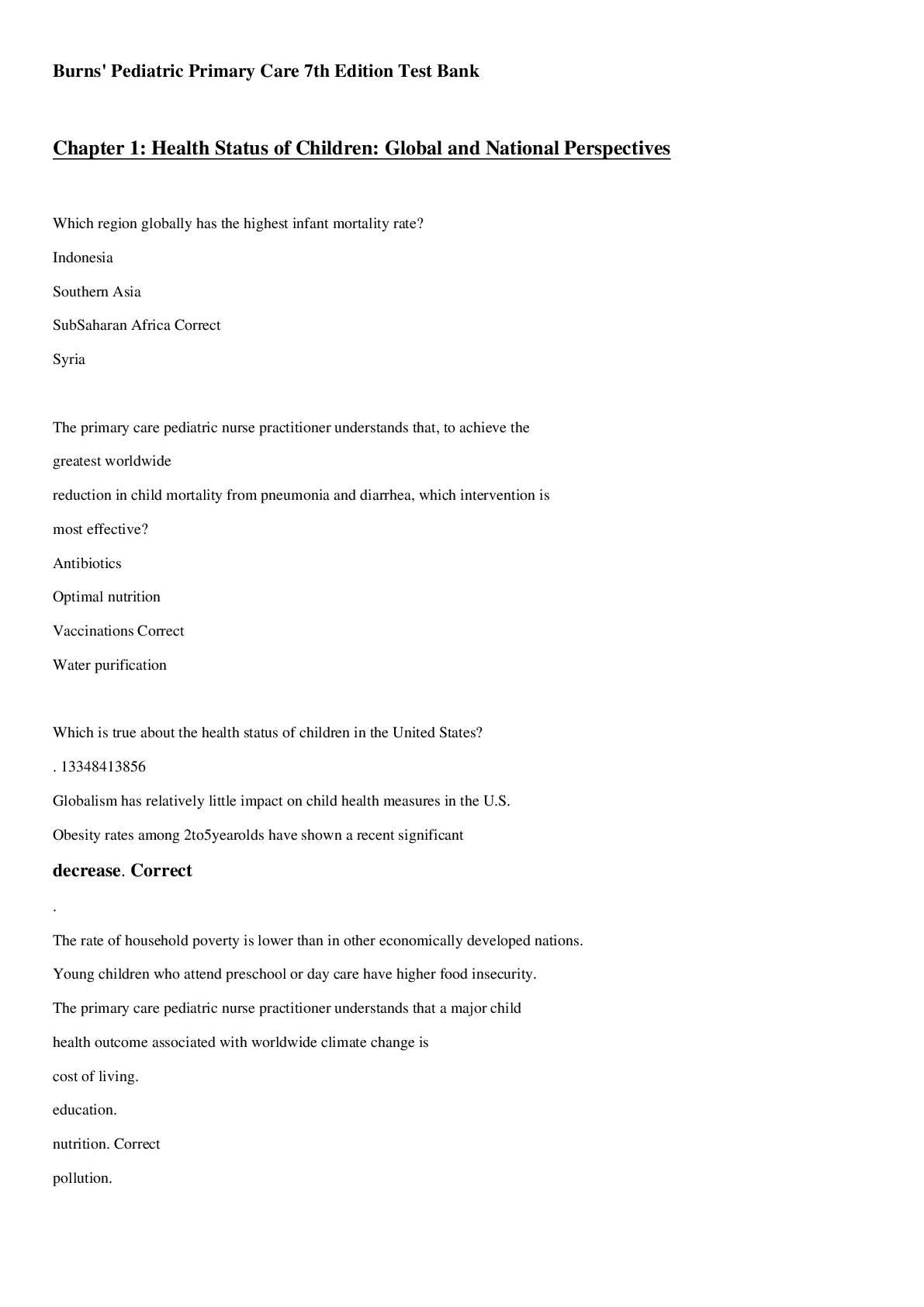

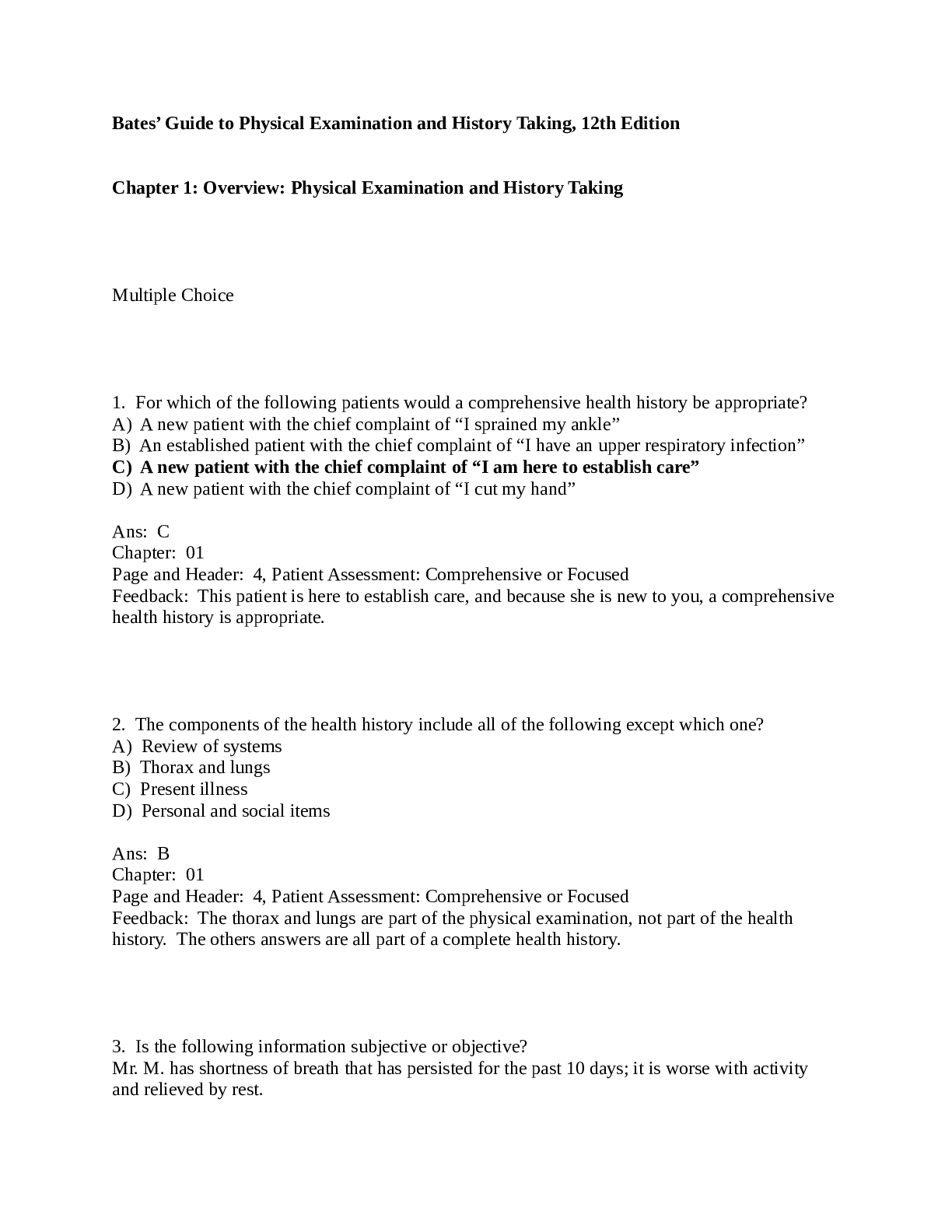
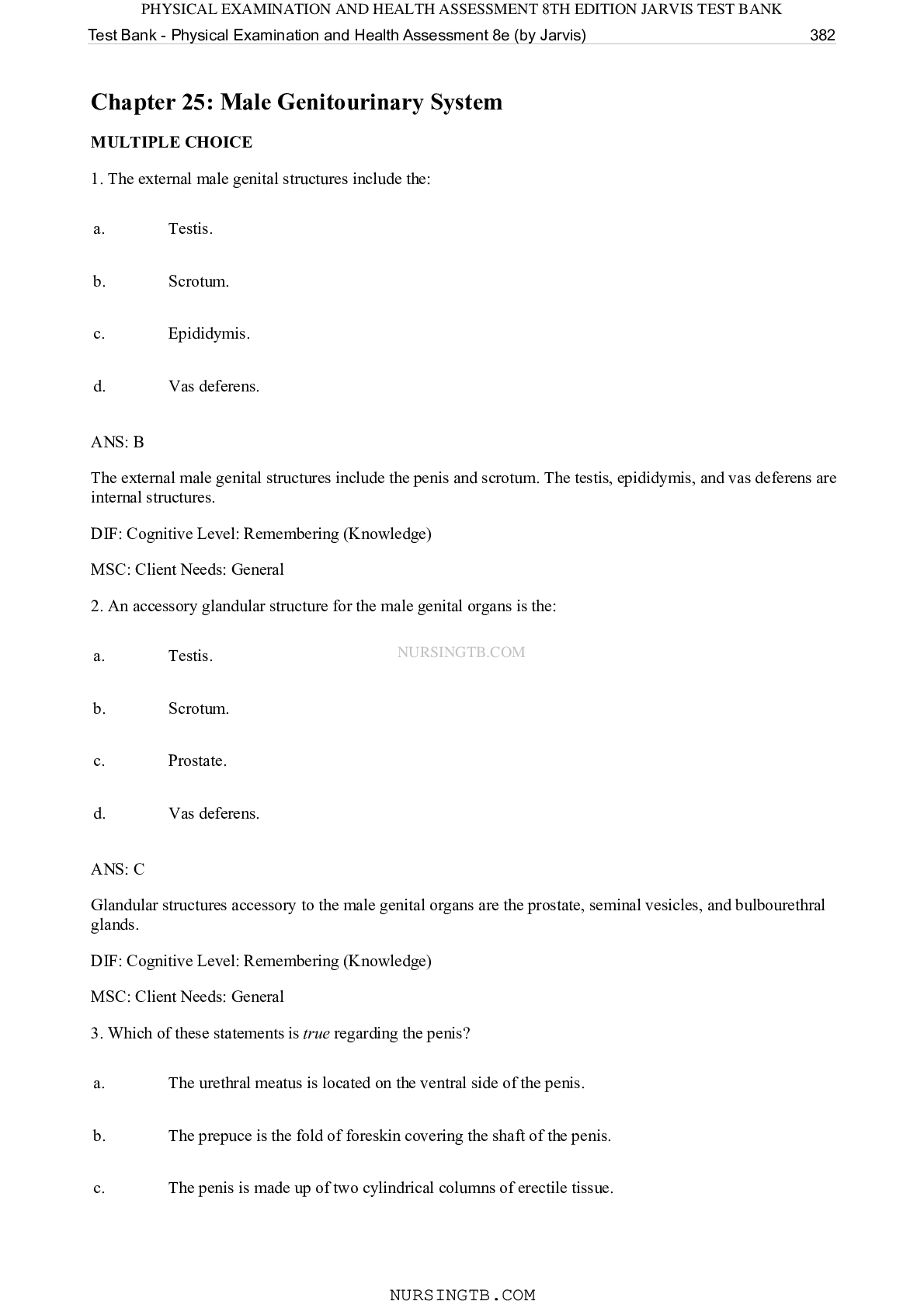

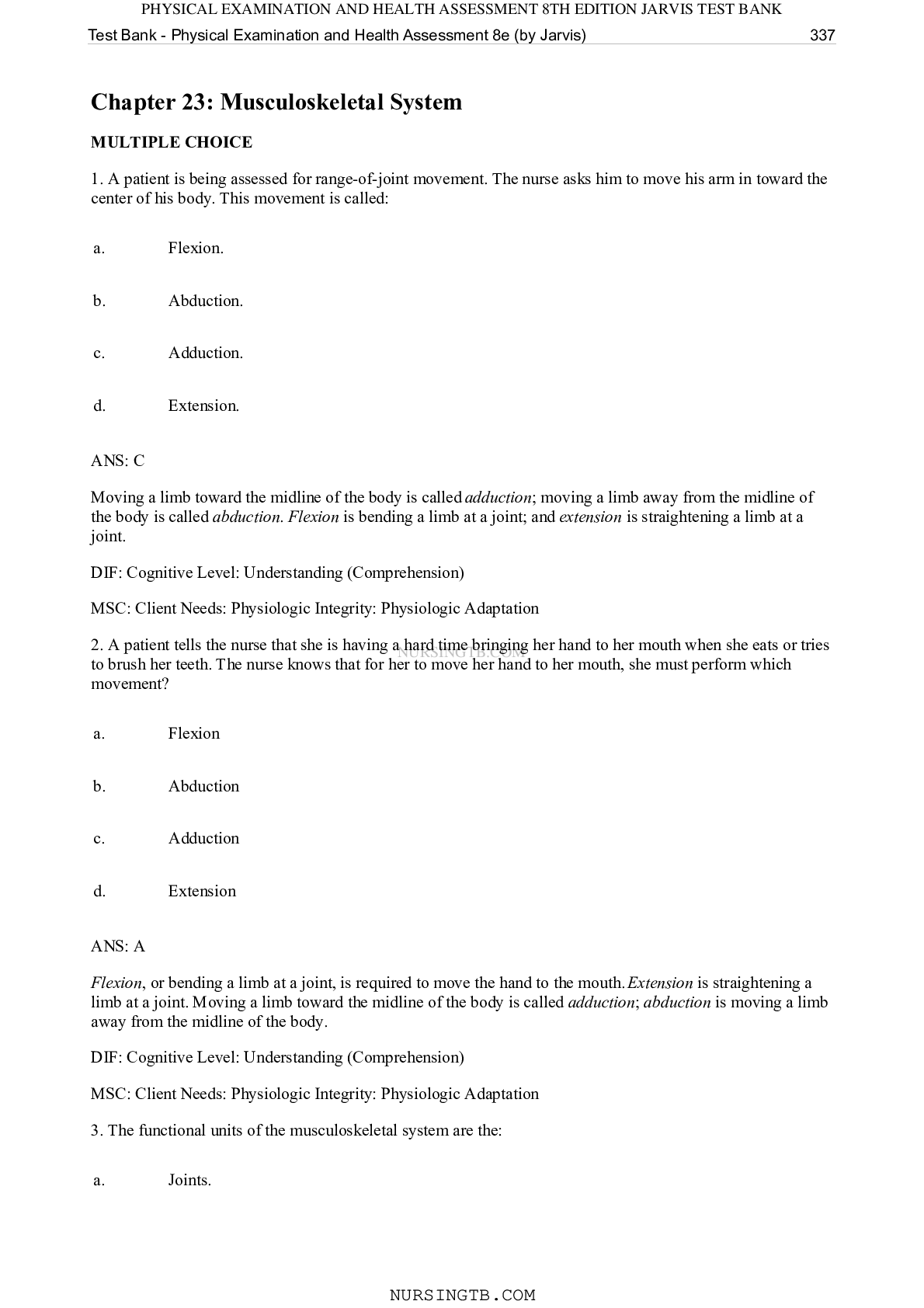

.png)
